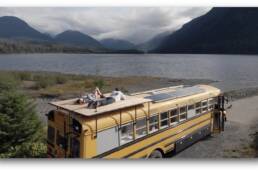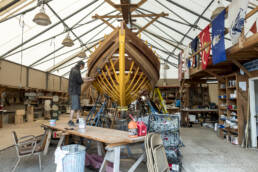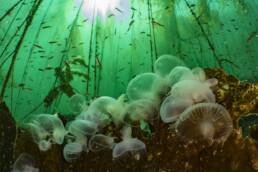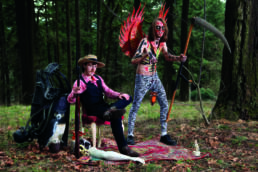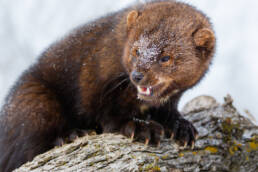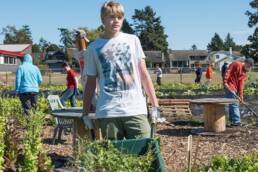Louisa Gilbert of Wild Bus Films has turned a simple yellow school bus into an off-grid travelling palace. This is #vanlife levelled up. Here’s how she did it.
In the recent issue of Kootenay Mountain Culture magazine, writer and filmmaker Louisa Gilbert writes about the Soulines Backcountry ski and snowboard festival. She describes how cold she was, how she had to chip ice off the lake to collect drinking water and how impressed she was with the snowy tent city, having never seen one before. Louisa is a recent Canadian convert who moved here from her native England a year ago. She’s travelled the word working for the BBC, National Geographic and Discovery Channel and worked with the likes of Sir David Attenborough, but when she came to British Columbia on one of her forays she knew this is where she wanted to spend the rest of her life.
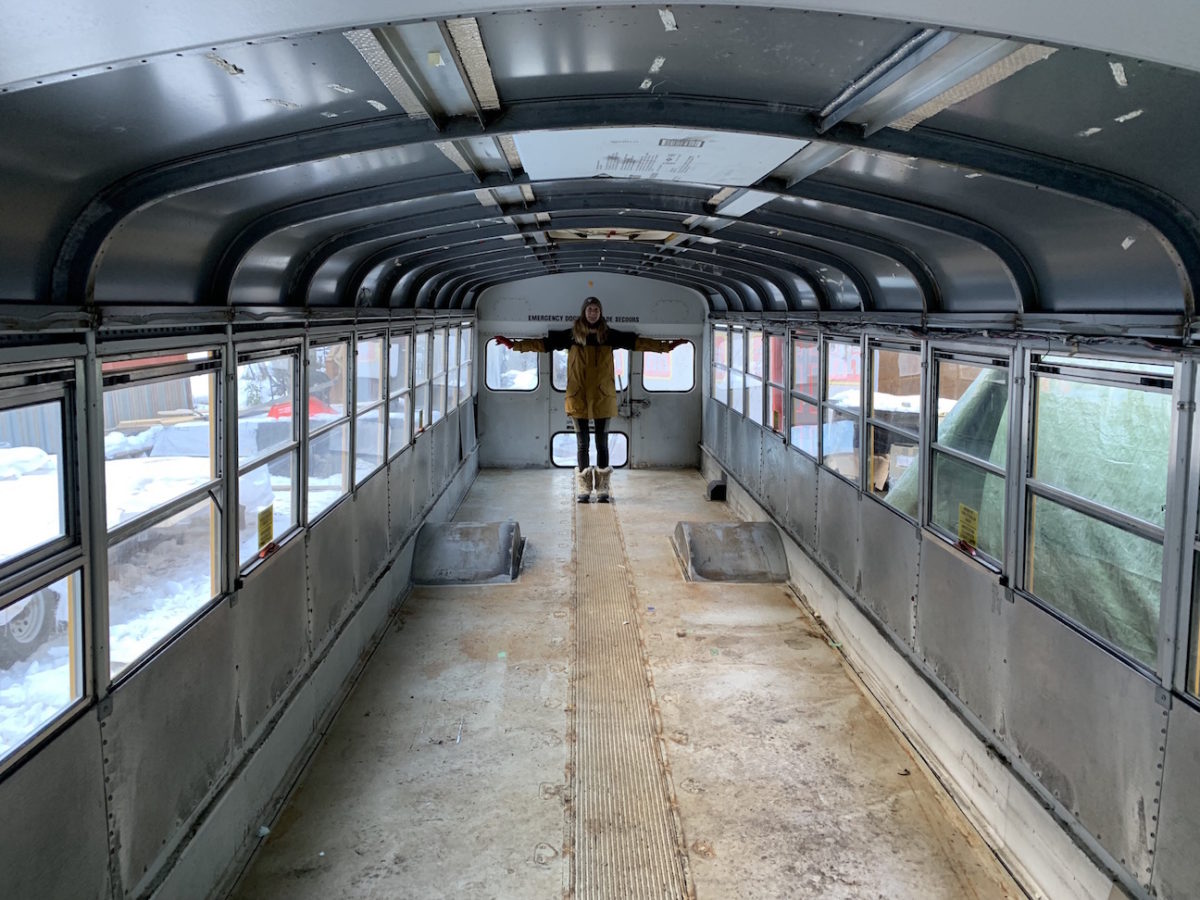
But she didn’t want an ordinary life. Rather than face mortgage payments and white, picket fences, she decided to buy an old, yellow school bus and convert it into a tiny home and studio where she can continue working on her film projects from the comfort of wherever she parks for the night. She purchased the bus on Vancouver Island but drove it to Nelson in order to do the conversion employing such local talent Seth Reidy of Nelson Tiny Homes and wood-working artist Elynyd Benjamin. “Nelson holds a special place in my heart,” Louisa says. “But I now live pretty nomadically all over the province depending on the films we are working on, The Kootenays was the ideal place to start the build of my dream project and business.” We caught up with Louisa to ask her more about how the conversion of the coolest school bus in BC happened.

Hey Louisa. Great to touch base again. Tell us about your background growing up in the UK.
I grew up in a small town outside London, England; the type of town, which as a teenager I could not wait to leave. So I did to study Archaeology and Anthropology at University College London. I took my degree with me into the television industry where I researched and later produced archaeology and natural world programs for BBC, Discovery Channel, National Geographic, PBS and Sky.
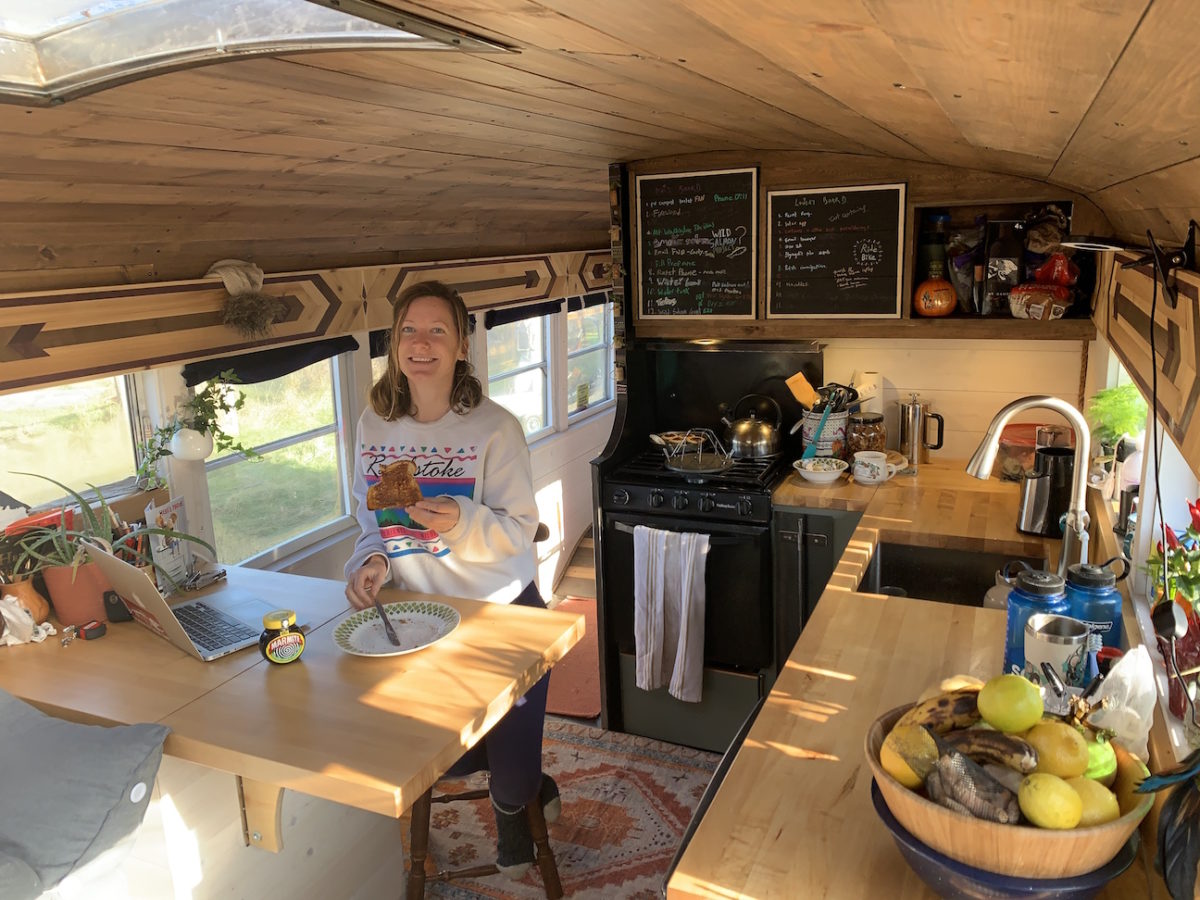
What made you decide to move to British Columbia?
Working in film and television meant I was lucky enough to travel the globe but it was a holiday in beautiful British Columbia that made me rethink my lifestyle. Everywhere I turned in BC it was the perfect backdrop for natural world films – I’d never have to fly again!
Where’d you get the bus?
It took a lot of searching.: scanning city auction listings; calling school districts; scouring eBay and Craigslist. I finally found my bus on Vancouver Island. It was my Black Friday deal last winter. It was definitely an experience my first time driving the bus. I was new to the “right” side of the road and I’d never driven something so huge – it’s 40 feet in length!
https://www.youtube.com/watch?v=xLMpEXSJk2E
Take us through the modifications you’ve done to it.
Hmm, where to start? The entire interior has been revamped from a totally empty shell to a custom home that can function completely off grid. It’s powered by propane and solar, has a composting waste and we carry all our own water which, for 2 people, luxuriously lasts 10-12 days and a lot longer, depending on how sparingly you want to wash. As far as the modifications go, it was certainly a measure-twice-cut-once situation. I spent nearly three months planning and drawing up models of how everything would fit and work together in the space. We started the build with Nelson Tiny Houses in the winter so, in the deep snow! To the exterior we welded the grey water tank along with a set of tool boxes to the under-carriage. The extra storage is unbelievably valuable – where else would we keep our skis? We set a roof deck on top – a platform to film from and a sweet space to hang out. Inside, it’s a tiny house. We have a wood burner – a Salamander Hobbit stove, which although small is mighty. The bathroom has a tub, which is an animal feeding trough: you can sit fully immersed in water whilst enjoying the adjacent stove for the cosiest washing experience! We have a queen-sized bed and a full kitchen with propane oven. If the roof was not curved, you’d forget you were in a bus once you’re inside.
The inside design is topped off with Elynyd Benjamin’s wood art inlays.
https://youtu.be/pubXjrgBXps
How long did all this take?
It’s been exactly one year since I landed in Canada and started looking at buses. I started living in the bus in June. It’s still a work in progress – I think it will always be!
https://www.youtube.com/watch?v=AUWYkmqtRtQ
Where’s it been so far?
From the Kootenays to Revelstoke and then Squamish and the bus has lived on the Vancouver Island for most of the Summer and Autumn.
Are you going to stay in it during the winter?
Yes – it’ll be the first one! From January 2020 until the end of the snow season, the “Wild Bus” will be parked on top of a mountain, specifically Mount Washington on Vancouver Island. It’s going to become the backdrop to some snowy short films!
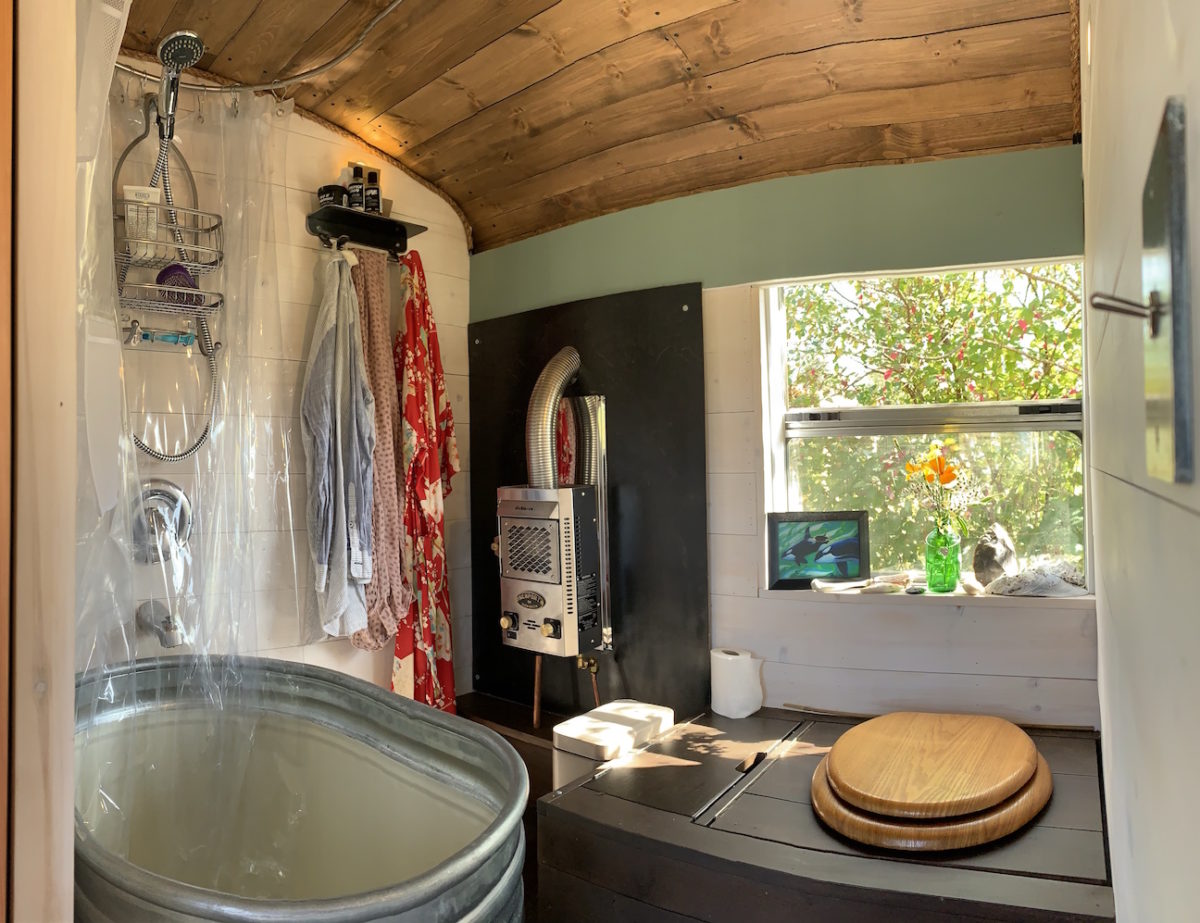
Aside from your Soulines story that’s out in the new issue of Kootenay Mountain Culture, tell us about some other projects you have coming up next.
Wild Bus Films produces stories with subjects rooted in the Pacific Northwest. At present, we are working on features for National Geographic as well as content creation for environmental campaigns and media outlets that promote the West Coast. We’re also proud to be working on two films centred around Wild Salmon for international broadcast – a subject close to our heart.
Related Stories
Of Vessels & Veritas At The Northwest School of Wooden Boatbuilding
The teachers at this esteemed Olympic Peninsula institution know that while owning a boat will change your life,…
Saving The Salish Sea in the Pacific Northwest
Two National Geographic photographers and marine biologists are trying to get the Salish Sea, which includes the Strait…
Who’s The Best Band in the Pacific Northwest Heavy-Metal Scene?
Born from record bins, basements and Cascadia’s blue-collared past, the Pacific Northwest heavy-metal scene has torn a…
What’s More Badass Than a Honey Badger? These Guys. And They’re Returning to the Pacific Northwest.
A ferocious carnivore and old-growth forager, the fisher has been over-trapped and its habitat nearly wiped out. But in…
Garret Buehler Does Nelson Proud
Young gun Garret Buehler gets his shred on in this beauty action/lifestyle/love living and riding in the Kootenays…
Delta’s Farm Roots Mini School Is Gaining Ground
Along the fertile banks of the Fraser River, kids are learning society's rite to grow. By Lisa Richardson. Some…


